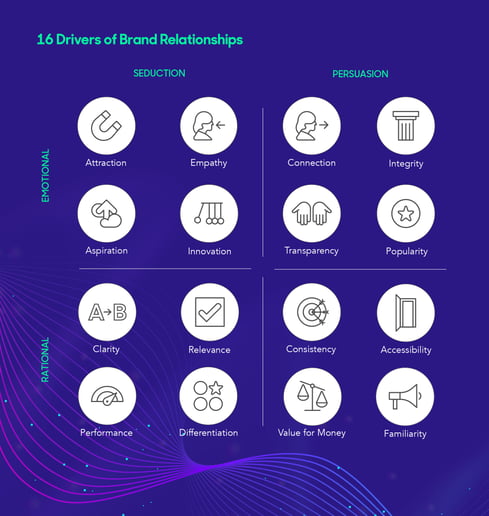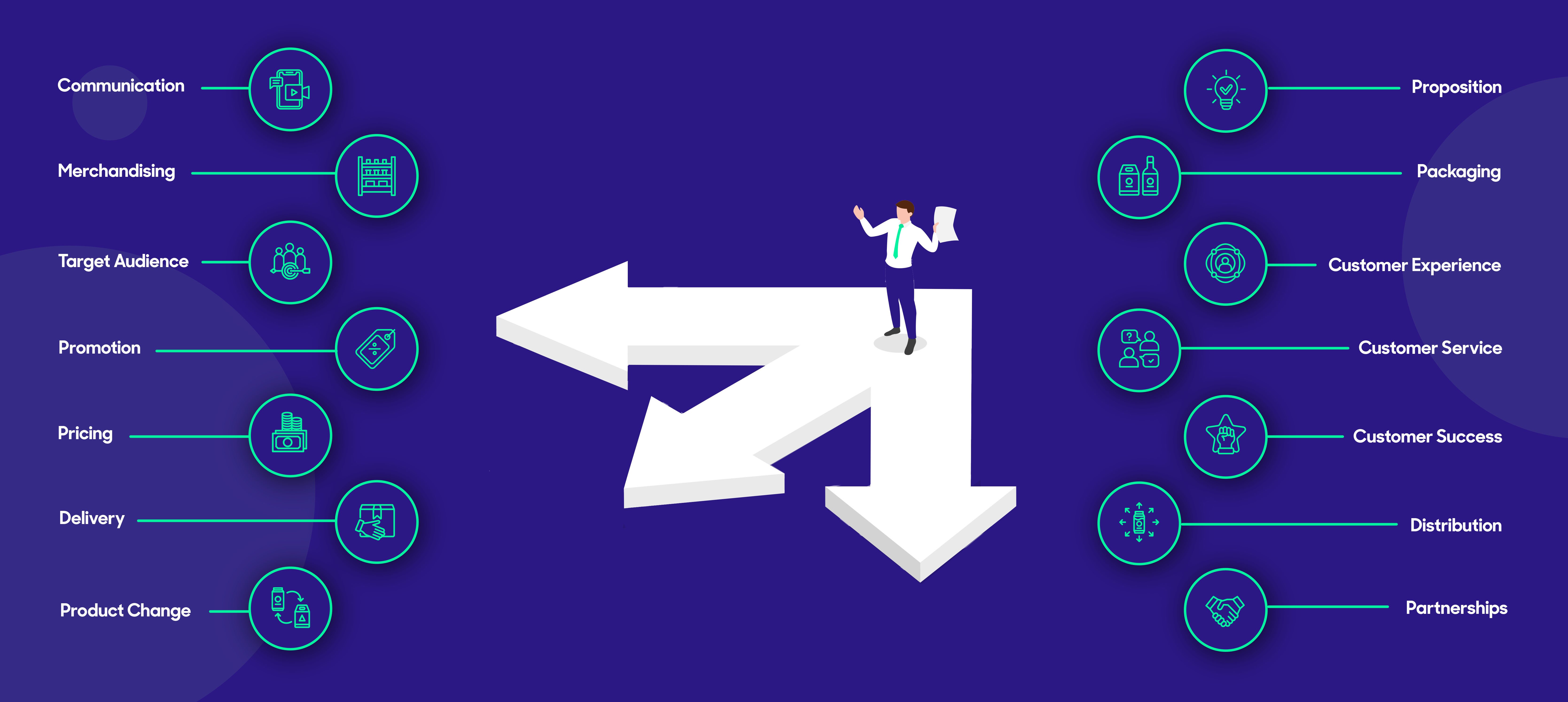Posted on March 4, 2021
Updated on March 13, 2023
3 min read time

A relationship is defined as the way in which two or more concepts, objects or people are connected. Understanding how relationships between brands and consumers are developed, sustained and grown is crucial to building long term loyalty.
We live in a world of competitive convergence, where the difference between one brand and another's offering is negligible. Brands need to find ways to become the brand of choice, which lies in understanding people’s inclination to interact with them.
In today’s world, that means understanding the relationship they have with their customers – what people expect from the brands they interact with - and then delivering on it.
All relationships are driven by exchange. If someone feels like they’re getting more from a relationship than what they’re putting in, they’re more inclined to stay. In the same vein, if they feel they’re putting in more than they’re getting out, they’ll likely choose to exit. It’s all about a positive Quid pro quo.
For brands, long-term customer loyalty is rooted in the benefit of the relationship outweighing the cost, with the exchange staying in favour of the consumer. So, for brands to strengthen their relationship with their target audience, getting to the root of what drives people's decision to buy or interact with a specific brand is a crucial.
Picture the scene: you’re in a supermarket looking to buy one of the most commoditised products – toothpaste. You see 50 types of it. Chances are, you know which one you’re going choose. But they all do the same thing: they all clean plaque, they all taste of mint, mostly all claim to whiten your teeth.
What makes you pick one over the other? What makes the brand you pick your brand of choice?
There are two components to the decision-making process: our subconscious feelings, known as System 1, and our conscious thoughts, System 2.
If you were asked, “Are Tesla cars expensive?” there is something that will hit you in your gut, before you even articulate a reply. That’s your System 1 response. It’s an instinctive, uncontrollable feeling which you have in response to something.
Beyond System 1 is System 2 – the conscious, more deliberate part of your brain which “thinks” in response to stimulus. It would be the articulated “why” behind the question “Are Tesla cars expensive?” posed above.
Understanding these conflicts between feelings and thoughts can help Brand Managers unpick what motivates people to pick a brand, and also what the barriers to entry might be if people's System 1 and System 2 responses aren't aligned. This means pulling certain Marketing Levers to address a disconnect between how people feel and how people think about a brand.
With 95% of brand decisions being made in System 1, uncovering what your brand must do to compete relies on the strength of the relationships your brand currently has with people, and where the opportunities to optimize these relationships lie.
ProQuo AI has proven that there are 16 different ways a brand can build its relationship with people: these range from how attractive people feel the brand is to how much integrity the brand has and how transparently the brand behaves.
These 16 Drivers are part of ProQuo’s ‘analysis machine’ and they’re the things we use to serve brands with action plans to deepen their relationships with consumers, and ultimately grow their brand.
The way in which brands and consumers deepen relationships is no different to the way in which people relate to one another. You can understand why you love or leave someone through the 16 Driver framework just as much as you can understand why you love or leave a brand.
By getting to grips with what people feel they need from your category, and where your competitors are meeting these expectations, you can identify the white space for your brand to really major on one or two of those Drivers, to carve out a competitive edge and deepen your relationship with your audience.

Once you've unpicked how people feel about your brand, and where you need to double down to grow, you can ensure your marketing efforts are laser-focused on shifting the dial across the relevant Drivers.

There are 14 Marketing Levers at a Brand Manager’s disposal – these range from Packaging to Merchandising to Communications – and within these Levers, there are countless combinations of actions to take to grow a brand. You could, for example, change the material of your Packaging from plastic to recyclable paper to grow your Integrity, or you could add an "Improved recipe" roundel on-pack to strengthen your brand's Performance.
At ProQuo AI, we turn the art of Brand Management into a science; analyzing brands every day, from every angle to then deliver custom action-plans for sure-fire growth.
Learn more about the actions you can take to build a brand people fall in love with in our guide.
Our intelligent platform will take your brand further, faster.
Don’t believe us?
© 2020-2023 ProQuo AI International
All rights reservedWebsite by Blend